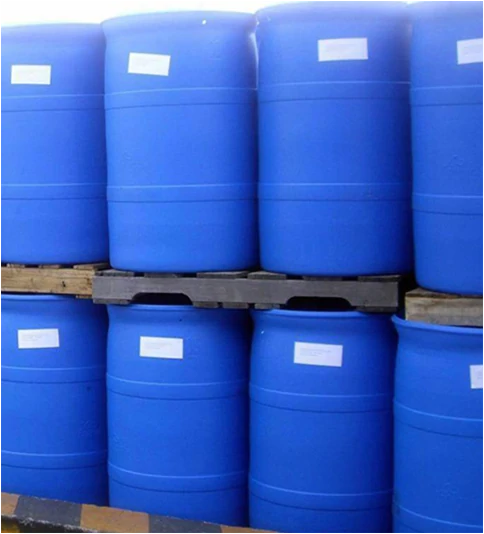
12 月 . 03, 2024 18:55 Back to list
what is the difference between glacial acetic acid and vinegar
Understanding the Difference Between Glacial Acetic Acid and Vinegar
When discussing acids, particularly acetic acid, there are notable differences between its pure form and its commonly used household variant. Two prominent terms that often come up are glacial acetic acid and vinegar. While both substances share a common chemical component—acetic acid (CH₃COOH)—their properties, uses, and concentrations vary significantly. This article aims to elucidate the distinctions between glacial acetic acid and vinegar.
What is Glacial Acetic Acid?
Glacial acetic acid is the pure, anhydrous form of acetic acid, meaning it contains no water and is typically composed of more than 99% acetic acid. It is a colorless liquid with a pungent odor, resembling that of vinegar but significantly stronger. The term glacial refers to its ability to solidify into ice-like crystals when cooled to temperatures below 16.6 degrees Celsius (62 degrees Fahrenheit). This concentrated form of acetic acid is highly corrosive and can cause severe burns upon contact with skin or eyes.
Glacial acetic acid is primarily used in industrial settings, where it serves as a key ingredient in the production of various chemicals, such as acetates, which are used as solvents and in textiles, plastics, and food preservation. Additionally, it plays a vital role in the synthesis of numerous organic compounds, making it an essential substance in the chemical manufacturing industry.
What is Vinegar?
Vinegar, on the other hand, is a dilute solution of acetic acid, typically containing around 4-8% acetic acid by volume, with the remainder being mostly water. It is often produced through the fermentation of ethanol by acetic acid bacteria, resulting in a tangy liquid that is widely utilized in cooking, food preservation, and various household applications. There are many types of vinegar, including white vinegar, apple cider vinegar, balsamic vinegar, and rice vinegar, each differing in flavor, color, and culinary uses.
Vinegar is renowned for its versatility in the kitchen. It can enhance flavors in dressings, marinades, and sauces, and act as a natural preservative due to its acidic nature. Beyond culinary applications, vinegar is also used as a cleaning agent because of its ability to dissolve mineral deposits and grease.
what is the difference between glacial acetic acid and vinegar

Key Differences
1. Concentration The most significant difference lies in their concentration of acetic acid. Glacial acetic acid contains over 99% acetic acid, while vinegar typically contains between 4% to 8%.
2. Safety Due to its high concentration, glacial acetic acid is hazardous and requires careful handling, including the use of gloves and goggles. Vinegar, being much less concentrated, is safe for general use and consumption.
3. Uses While glacial acetic acid is primarily used in industrial and laboratory settings, vinegar is largely used for culinary purposes and household cleaning. Vinegar’s lower acidity makes it suitable for consumption, whereas glacial acetic acid is not safe for ingestion.
4. Appearance and Odor Glacial acetic acid is a clear, colorless liquid with a very strong, sharp odor. Vinegar has a milder, more pleasant smell and often has a color depending on its type and source.
Conclusions
In summary, while glacial acetic acid and vinegar both contain acetic acid, they differ greatly in concentration, safety, and application. Glacial acetic acid is a concentrated, industrial-grade chemical with significant hazards, while vinegar serves as a safe, versatile product for culinary and household uses. Understanding these differences is essential for anyone working with or using acetic acid in any capacity, ensuring appropriate and safe applications of each substance in their respective contexts.
